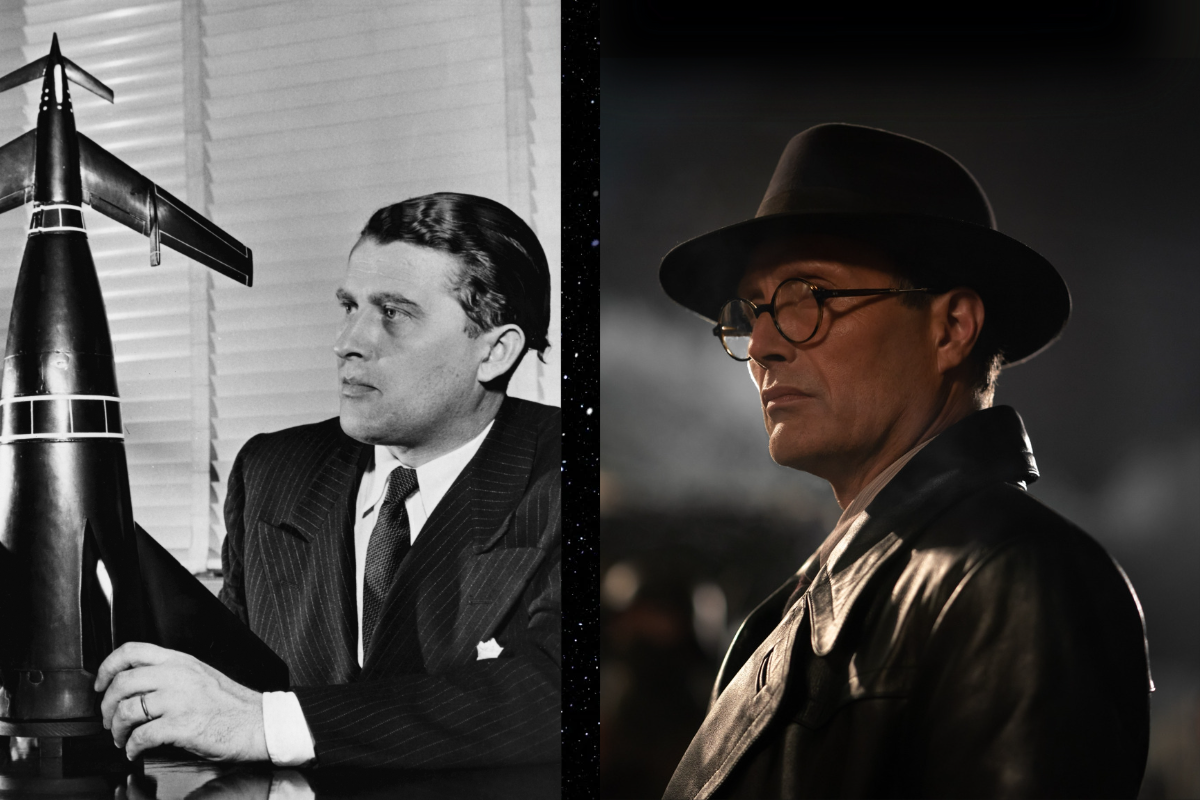The latest Indiana Jones film, “The Dial of Destiny,” starring Harrison Ford and the fifth installation of the series, is set to release this summer. The Indiana Jones movies are known for their combination of history, mythology, and science fiction whimsy, which occasionally make it difficult to tell what is factual and what is not. Although “The Dial of Destiny” revolves around the search for a mythical dial that can alter history, the film’s main villain, Jürgen Voller, is based on a very real episode in history.
The film’s timeline begins in 1969, when Jürgen Voller is working for the National Aeronautics and Space Administration, better known as NASA. Voller, presented as a former Nazi (in case the umlaut in his name hadn’t revealed his German background), has been recruited by the U.S. government to help beat the Soviet Union in the arms race of the Cold War. It is a back story based on the experience of many ex-Nazi officials, who the U.S. secretly recruited in the post-war era as part of what became known as Operation Paperclip. Operation Paperclip was a program developed to preserve and retain German scientific knowledge of weapons for U.S. research initiatives and to enable German scientists and researchers to be able to continue to further their own work. The program mainly supported research related to space, rockets, and missiles — still a nascent area of science. Some 1,600 German and Austrian scientists relocated to the United States as part of this operation.
One of the better known scientists recruited was Wernher von Braun, known for his groundbreaking work on rockets. He played a key role in Apollo 11’s moon landing in 1969 and worked on popularizing space exploration, even appearing in a Disney show about space in the 1950s. Yet during his entire career with NASA, neither Wernher nor the agency were forthcoming about the start of his career as a Nazi scientist.
Historians debate to what extent Wernher von Braun was ideologically aligned with the Nazi party. Some argue that he joined them as an opportunist, so that he could continue his research, pointing to the fact that he was arrested by the Gestapo in 1944 for comments he made disparaging the war. What we do know is that Wernher von Braun was a member of the Nazi party and an SS officer. He and his team worked from secret laboratories in Peenemünde, in Northern Germany, where he ran a lab that worked on creating V-2 rockets. These rockets were used both in battles against the Allies and against civilians, including in London and Paris. In addition, many believe the rockets were constructed using forced labor from concentration camps, notably Mittelbau-Dora, a subcamp of Buchenwald. Though Wernher denied this until his death in 1977, historians agree it happened, and it became part of his reputation: Already in 1965, singer, satirist, and mathematician Tom Lehrer wrote and performed a song that questioned Wernher’s actions and knowledge.
At the end of the war, von Braun surrendered to American forces. He ended up being sent first to Texas, then Alabama, to work on rockets for the U.S. Army. His research and work eventually took him to NASA, newly founded in 1958, where he worked on the rockets that were crucial to the success of the Apollo 11 moon landing.
Is Jürgen Voller a fictionalized version of Wernher von Braun? Of course, there are many other potential ex-Nazis who ended up working for the U.S. Army and/or NASA because of their scientific specialties, most of them relatively unknown. In the context of the film, I’m not sure how much it matters. What’s important is that the character of Jürgen Voller is fictionalized, but not made-up. Rather, he represents the men of Operation Paperclip. In an age of historical revisionism, but also in a movie franchise that relies heavily on myth and legends to fuel its plot, what is important is that this history happened. It’s not legend.
The inclusion of his character in the film could be viewed as commentary on the less-desirable parts of U.S. history. Although the U.S. implemented a de-nazification program, they were also playing a game of Bismarckian Realpolitik. As the Soviet Union went from an ally to an enemy, these (ex)Nazis went from enemies to allies. They were useful to the United States’ desire to have the most innovative researchers working on its scientific projects.
Within the film, this historical shift is important because Indiana Jones is convinced that Voller has not completely left his Nazi ideology in the past. I’ll leave it up to viewers to decide if that’s the case for the fictional Jürgen Voller, an easier task than making the call for historical personas such as Wernher von Braun. In a film series full of Nazi-fighting, I’m excited to see Indiana Jones take on one more Nazi, whose background not only highlights the limits of de-nazification, but sheds light on an often-forgotten historical moment.



